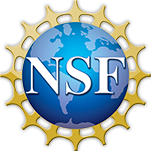Abstract
An anaerobic, nitrate-reducing, sulfur- and thiosulfate-oxidizing bacterium, designated strain 1812ET, was isolated from the vent polychaete Riftia pachyptila, which was collected from a deep-sea hydrothermal vent on the East Pacific Rise. Cells were Gram-stain-negative rods, measuring approximately 1.05±0.11 µm by 0.40±0.05 µm. Strain 1812ET grew at 25 – –45 °C (optimum 35 °C), with 1.5–4.0 % (w/v) NaCl (optimum 3.0 %) and at pH 5.0–8.0 (optimum pH 6.0). The generation time under optimal conditions was 3 h. Strain 1812ET was an anaerobic chemolithotroph that grew with either sulfur or thiosulfate as the energy source and carbon dioxide as the sole carbon source. Nitrate was used as a sole terminal electron acceptor. The predominant fatty acids were C16 : 1 ω7c, C18 : 1 ω7c and C16 : 0. The major polar lipids were phosphatidylethanolamine, diphosphatidylglycerol and phosphatidylglycerol. The major respiratory quinone was menaquinone MK-6 and the G+C content of the genomic DNA was 47.4 mol%. Phylogenetic analysis of the 16S rRNA gene of strain 1812ET showed that the isolate belonged to the Epsilonproteobacteria , and its closest relatives were Sulfurovum lithotrophicum 42BKTT and Sulfurovum aggregans Monchim 33T (98.3 and 95.7 % sequence similarity, respectively). DNA–DNA relatedness between strain 1812ET and the type strain of S. lithotrophicum was 29.7 %, demonstrating that the two strains are not members of the same species. Based on the phylogenetic, molecular, chemotaxonomic and physiological evidence, strain 1812ET represents a novel species within the genus Sulfurovum , for which the name Sulfurovum riftiae sp. nov. is proposed. The type strain is 1812ET (=DSM 101780T=JCM 30810T).

